- Features of treatment
- Useful properties of the plant
- Useful recipes
There is no better plant for removing mineral salts from joints than young large horseradish leaves. A perennial plant quickly and effectively removes the inflammatory process, eliminates puffiness and painful sensations. Horseradish leaves from salt deposition are used as an external remedy, therefore this method of treatment has practically no limitations. After a short therapeutic course, joint mobility is restored and a characteristic crunch disappears. But it is necessary to visit a neurologist for examination and evaluation of treatment effectiveness.
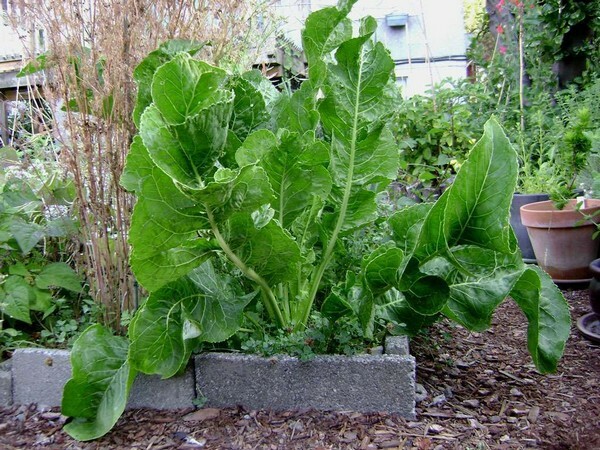
are used. Features of
treatment Excessive physical loads, irrational and unbalanced nutrition, bad habits will sooner or later lead to problems with joints. They are gradually deformed, and cartilage tissues are dehydrated. All this becomes the reason of accumulation of harmful mineral salts, which aggravates the disease even more. This condition is typical for the following pathologies of the musculoskeletal system:
- of arthritis and arthrosis;
- of thoracic, cervical, lumbar osteochondrosis;
- radiculitis;
- intervertebral hernia and neuralgia.
Over time, the deposited layers provoke the formation of bone outgrowths that pinch the nerve roots. The person experiences the strongest pains not only at walking, but also at attempt to change position of a body. Horseradish leaves for removing salts are used in folk medicine in the form of compresses and ointments. The presence of a mustard oil in a useful plant is used to create a warming effect in the patient's joint. This will not eliminate the already arisen destructive and degenerative changes, but will become an excellent prevention of the further deposition of salts. The use of medicinal forms from horseradish leaves prevents the spread of the inflammatory process to healthy bone, articular and cartilaginous tissues.
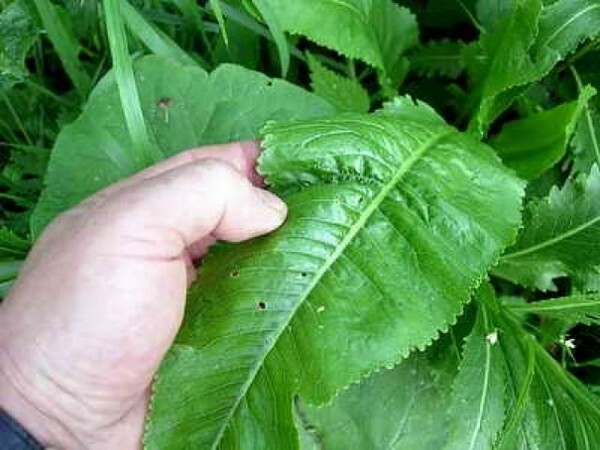
Useful properties of the plant
To remove accumulated harmful joints in the joints, the biologically active substances contained in horseradish leaves help. Bioflavonoids improve the condition of veins, arteries and capillaries, which has a positive effect on microcirculation in damaged cartilage tissues. Normalization of blood circulation leads to the penetration of vitamins and useful microelements into the joints, as well as molecular oxygen. The flow of blood from the areas subjected to dystrophic changes, excess salts are washed out. In the therapy of joints, other bioactive horseradish compounds take part:
- phytoncides and mustard oil relax the muscle spasm, restore the optimal transmission of nerve impulses;
- organic acids accelerate metabolic processes, promoting the regeneration of damaged tissues, nerves and blood vessels;
- salicylic acid has a powerful antispasmodic and analgesic effect, facilitates the human condition, and in some cases helps to avoid the use of anti-inflammatory nonsteroidal drugs that ulcerate the gastric mucosa;
- polysaccharides have the ability to bind to their surface slags and toxic compounds, which are the end and intermediate products of the inflammatory process.
Horseradish draws salt from the body, triggers healing of damaged joints. An important role in the induction of mineral compounds is the presence of antacids in the composition of a useful plant, which exhibit antioxidant activity. These substances do not allow free radicals to destroy articular, bone and cartilaginous tissues.
It's interesting: Despite the external use of horseradish leaves, the plant effectively eliminates edema of soft tissues. And along with excess fluid from the joints, harmful salts of calcium are also removed.
Useful recipes for
In the treatment of pathologies occurring against the background of the deposition of salts in the joints, both fresh and dry horseradish leaves are used. The main ingredient of vegetable raw materials is mustard oil, which does not lose its useful properties even when heat treated. But biologically active compounds, which have volatility, are not preserved in dry leaves. The greatest therapeutic efficiency is shown by raw materials with a high phytoncide content. These substances accumulate in large quantities in large, but young horseradish leaves that have just been ripped from the bed.
Advice: If there is no possibility to constantly use fresh vegetable raw materials, then you should store it for future use. To do this, the leaves need to be folded into a sealed plastic bag and placed on the top shelf of the refrigerator. Raw materials do not lose their medicinal properties within a week.
The duration of the course of treatment is better coordinated with an osteopath or neurologist. When diagnosing destructive-degenerative changes of moderate or severe severity, folk healers recommend taking salt 1-2 months. And for the prevention of diseases it is enough and 2-3 weeks of daily use of compresses or medical baths. Do not forget that such a therapeutic technique does not cancel the admission of medications prescribed by the doctor.
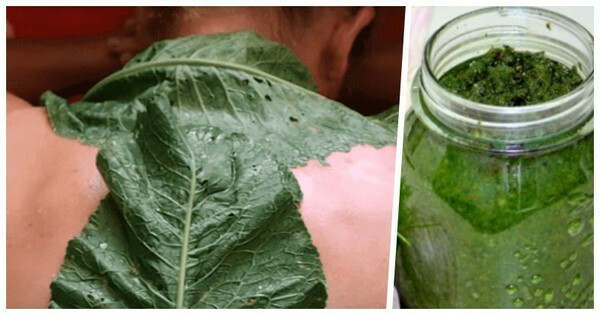
Compresses
The most effective way to get rid of mineral deposits in joints is a compress. A large fresh leaf is washed under a stream of water and immersed in boiling water for 30-40 seconds. After cooling, apply to the neck, knee or elbow and secure with a wide bandage or scarf. Keep the compress until completely dry, and after removing the bandages lubricate the skin with a thick nourishing cream to prevent irritation. And it's best to take advantage of such a traditional medicine recipe:
- A large, scalded horseradish sheet is thoroughly kneaded until a dark green juice is extracted.
- Lubricate the surface with thick honey( acacia or buckwheat) and attach to the affected joint.
- Secure with a bandage and hold for 2-3 hours.
- Carefully remove the compress, rinse the leftover with warm water and apply a cream on the skin.
The combination of honey and mustard oil from the horseradish significantly enhances the therapeutic effect of the procedure. After removing the compress on the surface of the sheet, you can see the smallest crystals. This is the harmful mineral compounds accumulated in the joint and bone tissues. The fact that there are fewer of them will be indicated by the decreasing edema and the disappearance of the crunch when flexing-extending the knee, elbow or fingers.
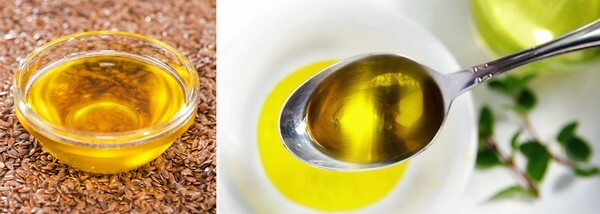
Therapeutic baths
The procedures are very useful in detecting multiple destructive-degenerative changes in the musculoskeletal system. This method of treating horseradish leaves from the deposition of salts on the neck is especially relevant. Therapeutic baths help to get rid of radiculitis and osteochondrosis of various locations, intervertebral hernias. Before the therapeutic manipulation, the medicinal infusion is prepared:
- In a three-liter jar, cut fresh horseradish leaves are densely packed and poured into the neck with hot filtered water.
- Leave in a cool dark place for 3-4 days, constantly shaking the container.
- Add a liter of filtered infusion into a bath filled with warm water.
The best time for the procedure comes an hour before going to bed. Do not take too long to take a bath, hoping for a faster recovery. It is enough 20 minutes that the process of separation of mineral salts from the joints began.
Warning: Treatment baths should not be taken with chronic heart failure, high blood pressure and gynecological diseases( uterine myoma, andexitis, endometriosis).
Healing oil
Such a medicinal form of horseradish leaves will help not only to eliminate the deposition of salts, but also to stop the inflammatory process in the aching joint. After rubbing the oil after 20-30 minutes the severity of the pain syndrome decreases, discomfort sensations disappear during movement. To prepare the drug, you should proceed according to the following algorithm:
- Capacity of dark glass in volume 0,5-1,0 l fill up to the top( slightly primitive) with crushed horseradish leaves.
- Carefully pour the vegetable oil up to the neck with a wall, tightly clog.
- Keep in a dark and warm place for 2-3 weeks, shaking the contents daily.
- If necessary, cast the drug and rub it into damaged areas.
For the preparation of phytopreparation, it is best to use olive, linseed, corn unrefined oil. They include biologically active compounds that promote optimal absorption of nutrients from horseradish leaves. Moreover, it is this combination of vegetable raw materials and oil that ensures delivery of phytoncides and vitamins directly to the diseased joint.
It's interesting: After rubbing the remedy in the knee, elbow or neck, you immediately feel a slight heat, and sometimes even a slight tingling. These sensations persist for several hours and indicate the effectiveness of the therapeutic technique with horseradish leaves.
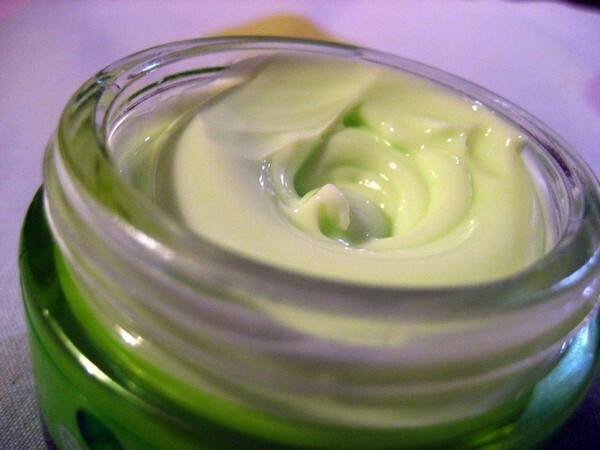
Warming ointment
This phytotherapy is used both for compresses and for rubbing into a diseased joint. When using it, you should be careful, since it contains the maximum concentration of biologically active substances from the chemical composition of horseradish leaves. If after application in the person there are discomfortable sensations, the remedy should be washed off under a stream of water and greased with a lotion or tonic. This method of removing salts with horseradish leaves can be used only 2-3 times a week. How to prepare a medicinal ointment:
- Combine a large leaf with boiling water and grind it into a homogeneous mass with a mortar and pestle.
- Remove the remaining coarse particles, and add 2-3 drops of any vegetable oil to the thick slurry.
- Add to the mixture an equal amount of oily base, stir thoroughly.
- Store in a tightly sealed jar of dark glass in the refrigerator.
As a fat base, you can use Vaseline, lanolin, regular children's cream. Traditional healers recommend the use of even fresh rustic butter, but in this case the storage time of the ointment is significantly reduced.
Recommendation: From the deposition of salts in the joints, alcoholic tincture of their horseradish roots is also used. For its preparation in a can, the vegetable raw materials are densely laid and filled with alcohol. After two weeks of insisting, take 3 drops of the drug every day, stirring them in a glass of cold water.
